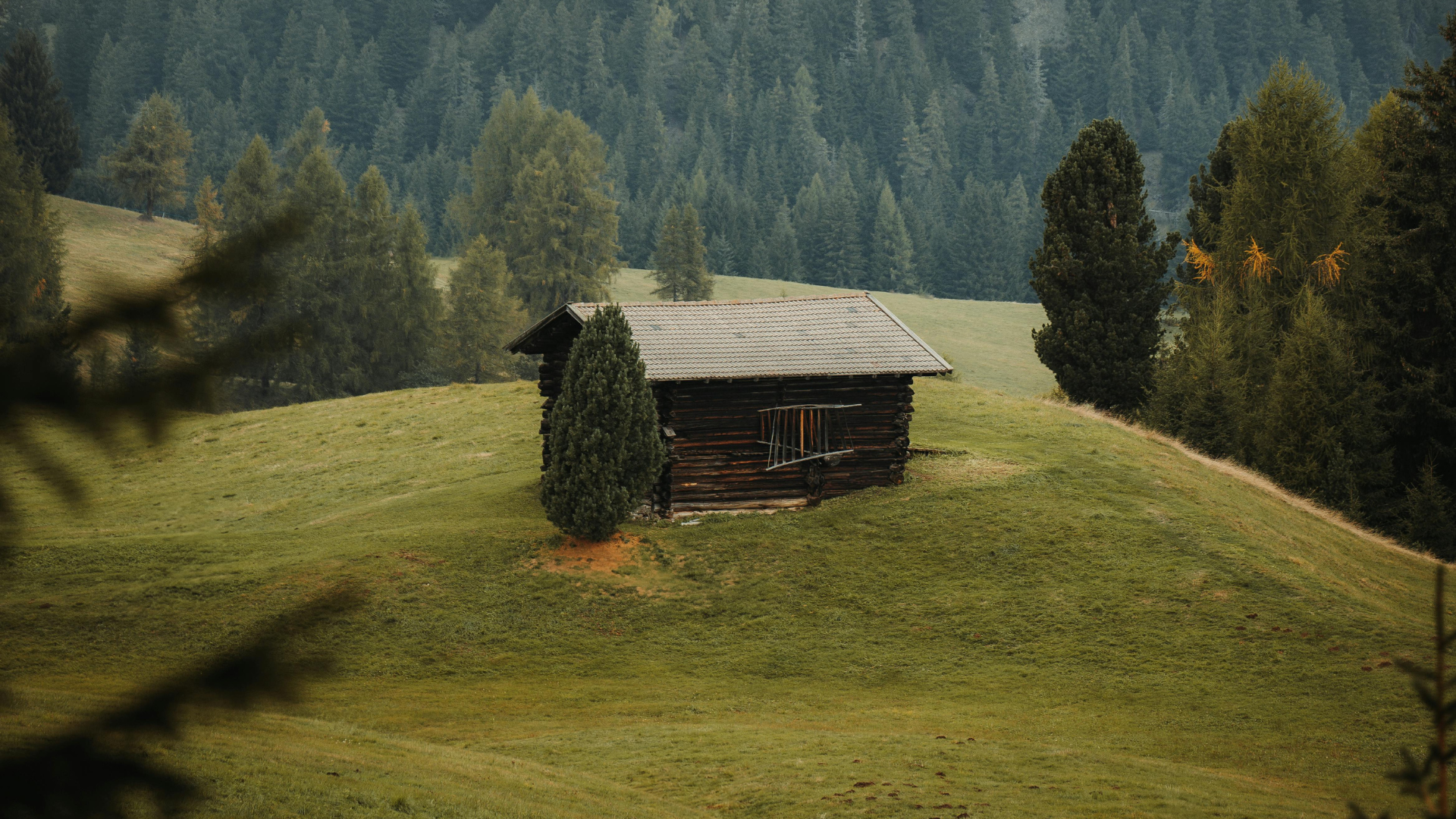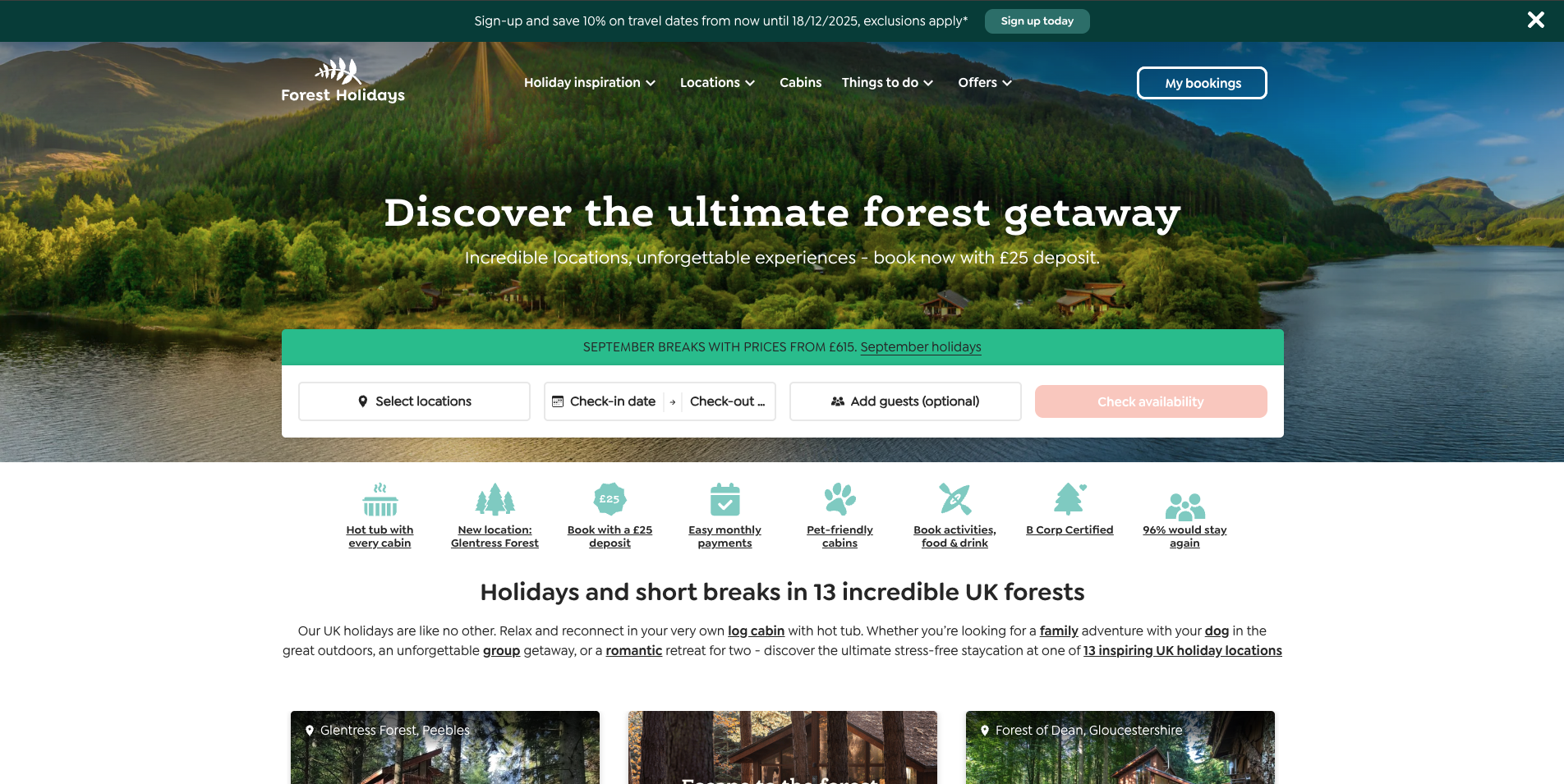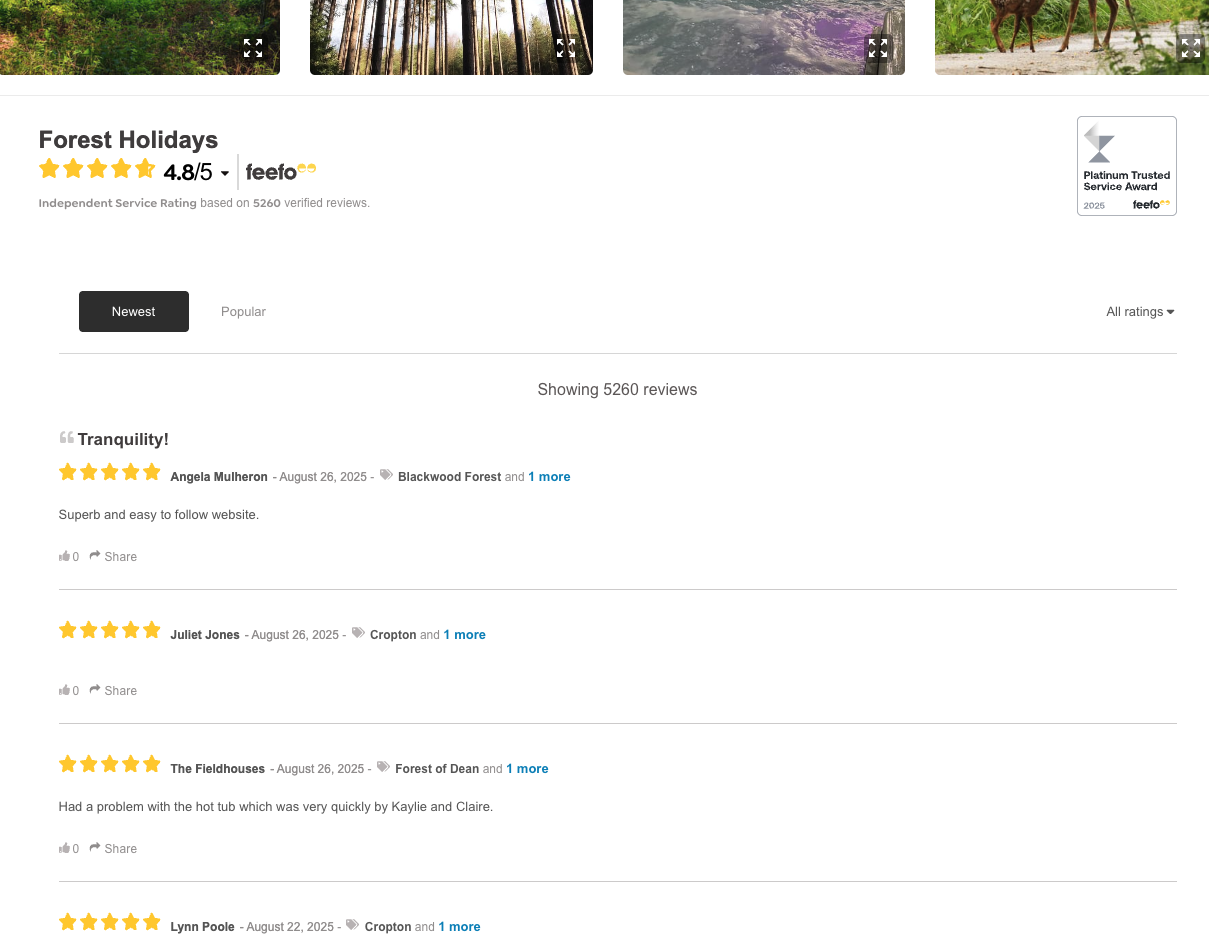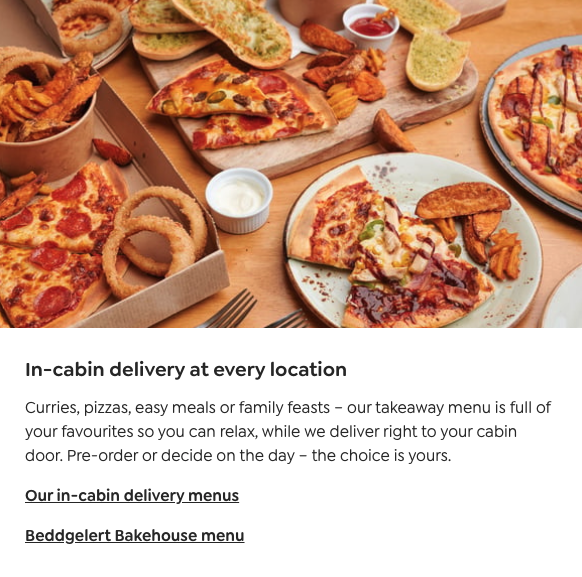2025’s holiday‑cottage market is up, with total organic traffic 4% higher than last year. People are still hunting for hot tubs and dog-friendly cabins, but they’re also craving sustainability and flexible payments.
Our latest Salience Index shows that “forest holidays” is now the second most‑searched emerging brand term after Hoseasons. It generates around 110k UK brand searches every month and is growing by 6%.
Clearly, something is going on under those trees.
This article deconstructs how Forest Holidays – a cabin company rather than a cottage‑letting site – has used search marketing to muscle into a crowded holiday‑let marketplace. We’ll look at the broader market, dissect the brand’s strategy across UX, CRO, content, digital PR and storytelling, and outline what you can crib for your own site.
Click here to access our latest Holiday Coteges Market Report. 100+ leading brands ranked across organic/brand/social.
Market context – big brands, bigger search terms

Holiday‑let search is dominated by a handful of names. Hoseasons leads the pack with 450k monthly brand searches and a 14% growth rate.
Sykes, Holidaycottages.co.uk and Cottages.com follow, all enjoying high brand awareness and deep pockets for PPC. It’s a fiercely competitive space. Overall visibility grew 4% year on year, yet most of that growth accrued to the top five domains.
Amid this, Forest Holidays looks like an invader. It’s not technically a cottage brand, rather a letting agent like many others, but it targets the same “self‑catering in the countryside” keyword set.
Search volume for its brand term has risen to 110k monthly queries with a 6% YoY interest trend, and broader terms such as “log cabin with hot tub” have seen triple‑digit search growth in our dataset. With holiday lodges and cabins featuring heavily in receding trend tables (keywords like “lodge and hot tub” are down 38%), any brand bucking the downward trajectory deserves a closer look.
What Forest Holidays gets right
Experience first, product second
The Forest Holidays site sells a feeling before a cabin. Its hero banner proclaims “Discover the ultimate forest getaway” and prompts users to select a location, dates and guests in a single, mobile‑friendly search.

That widget anchors the page, making it obvious where to start without forcing visitors into long forms. Above it sits a green bar offering 10% off for email sign‑ups, while below the hero lie a row of icons summarising benefits: hot tubs with every cabin, £25 deposit bookings, easy monthly payments, pet‑friendly cabins, B‑Corp certification and a 96% “would stay again”.
Often, the best CRO work revolves around transparency – key selling points, and potential blockers made very clear early on. Forest Holidays’ clarity helps them get around a major pain point in holiday booking. Cost anxiety. The option to pay just £25 upfront and spread the balance appeals to millennials juggling cash flow and fits the growth in “spread the cost” holiday searches.
Content that answers questions (and sparks dreams)
Beyond the booking engine, Forest Holidays invests heavily in inspiration. Every cabin page features immersive photography, curated itineraries and local tips. Its “Stay, explore, play” section encourages visitors to plan activities such as guided walks and wildlife safaris, linking directly to booking pages.
Further down the homepage, a panel invites users to “Discover our locations” across 13 forests, while another section quotes a glowing review from The Times – “It’s family time from here on out”. Press endorsements act as digital PR, lending authority without the spammy guest posts we still see in this industry.
The brand leans into social proof at scale. A mid‑page gallery asks “What’s your #ForestFeeling?” and pulls in customer photos while nudging users to tag the brand on social platformsforestholidays.co.uk.
Below that sits an embedded Feefo review feed showing a 4.8/5 independent service rating from over 5,000 verified customersforestholidays.co.uk. Integrating verified reviews directly on the booking page reduces bounce‑rate and persuades fence‑sitters without the need for contrived testimonials.

Payment options and frictionless extras
Forest Holidays’ checkout journey has been built for the modern booking stage. After picking dates and guests, users can opt for monthly instalments and a £25 deposit. Once a getaway is chosen, the site upsells extras such as in‑cabin pizza delivery, forest ranger experiences and bike hire, accompanied by a reminder that “Our easy Pay Monthly option means you can spread the cost of your stay, including many activities and experiences”.

Community and storytelling
Forest Holidays wraps its cabins in narrative. The brand frames breaks as a way to unplug, reconnect and find your “Forest Feeling” – a narrative repeated across the site, social media and email campaigns. Its hashtag‑driven social gallery encourages travellers to become part of the story.
Funnel of the holiday cottage buying journey
-
Dreaming & Inspiration
Travellers scroll social feeds, watch travel vlogs and picture a break away. Forest Holidays intercepts this moment with rich photography, inspirational copy and press quotes. It uses social hashtags (#ForestFeeling) and user‑generated galleries to fuel wanderlust.
-
Planning & Research
Here the job is to answer questions fast. The navigation splits content by Holiday inspiration, Locations, Cabins, Things to do and Offers, helping users compare options without endless clicking. Feefo reviews and “96% would stay again” stats appear early, while blogs and itineraries provide detailed local guidance.
-
Booking & Paying
A single search bar captures location, dates and guests, with transparent pricing and availability. Users can secure stays with £25 down and choose monthly instalments. Extras are upsold without pressure and can be added to the payment.
-
Experience & Advocacy
Guests are encouraged to share their stay with #ForestFeeling, feeding back into the inspiration loop. The embedded review system shows verified feedback and a Platinum Trusted Service Award, building a circle of social proof.
Key takeaways
- Don’t make users hunt for deposit amounts, refund policies, or sustainability credentials. Let Forest Holidays’ hero section’s icons and succinct copy do the heavy lifting.
- Low deposits and monthly payment plans reduce friction for price‑sensitive customers and increase conversion.
- Guides and itineraries should answer fundamental questions and provide practical “good to know” sections. Avoid keyword‑stuffed blog spam.
- Verified reviews, third‑party accolades and user‑generated galleries build trust. Encourage customers to share their experiences with branded hashtags.
- Tell a story that resonates. Forest Holidays sells a feeling – reconnection in nature – rather than just accommodation.
Conclusion
Holiday‑cottage search is getting tougher. Sure, the market has seen a 4% market‑wide visibility growth, but it’s uneven, with market incumbents swallowing the traffic increase. Perhaps this is yet another market where brand wins. Brand is increasingly becoming the No.1 trust signal, and more of an SEO strategy than ever.
Read our article on why and how you should focus on building your brand. Brands differentiating on experience and build for real travellers’ buying journeys stand out. Stop obsessing over keywords alone and start crafting journeys that make people want to pack their bags.
